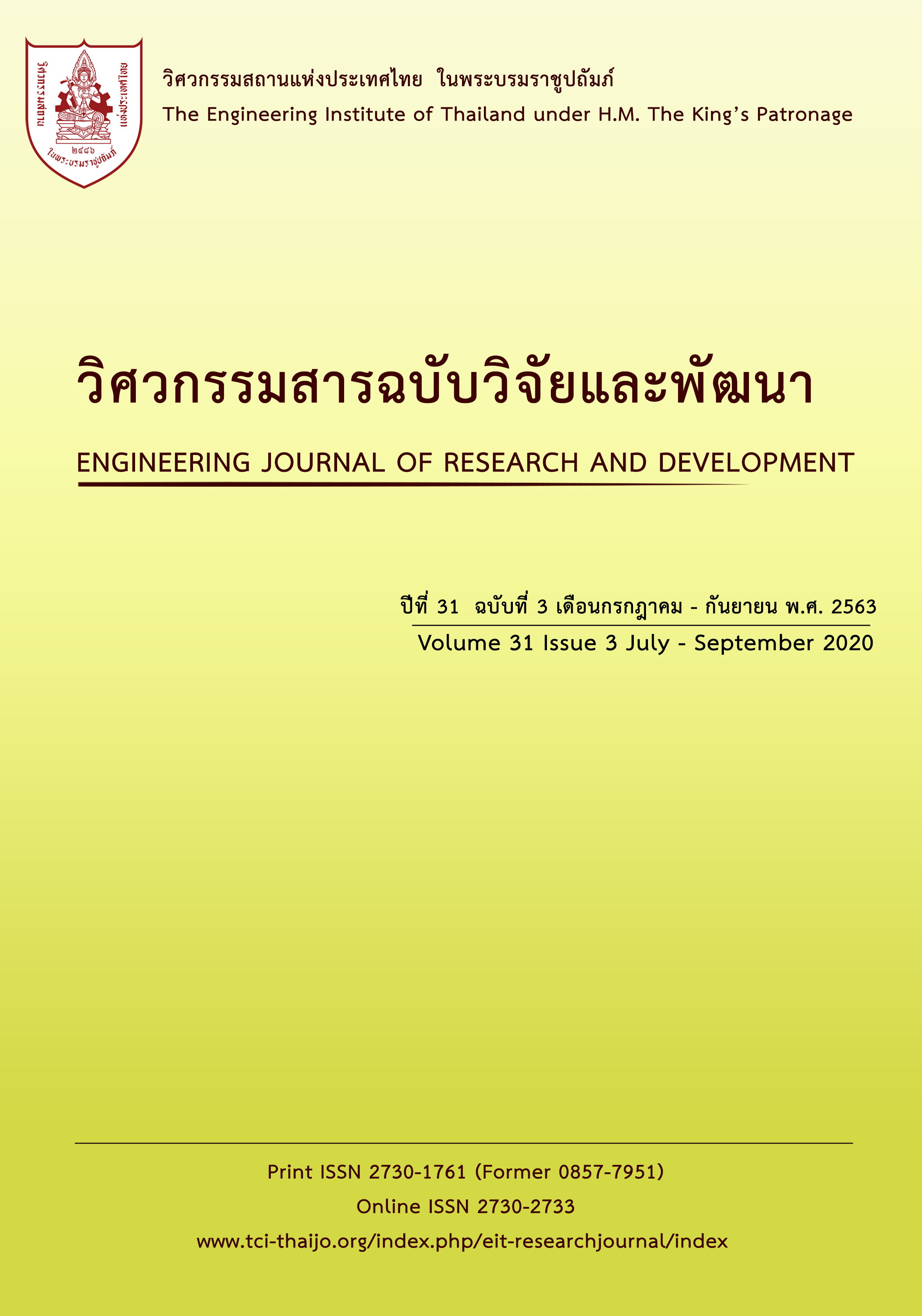INVESTIGATION OF STRENGTH OF CONCRETE COMPRISING SIEVED BASALT DUST AS SAND SUBSTITUTION
Main Article Content
Abstract
The research objectives are to investigate the compressive strength of the concrete partly composed of sieved basalt dust aggregate as sand substitution, as well as to look into its application in civil engineering. The sieved basalt dust ranges from the ratios of 20, 40, 60, 80 and 100 percentages (only sieved basalt dust aggregate) by weight. The investigation is through the comparison between the concrete mixed at the water-cement ratios (W/C) 0.45 and W/C 0.65. The experimental results have shown that the concrete of both mixing ratios provides the highest compressive strength at 60 percentage of sieved basalt dust in place of sand. The peak strengths are 350 ± 4.50 ksc for W/C 0.45 and 299 ± 10.44 ksc for W/C 0.65. The strength 350 ± 4.50 ksc is both more reliable and more consistent. In comparison between the normally mixed and the two mixing ratio concretes, the former has higher strength about 1.1% and 4.2% respectively. For the application viewpoint, the standard of the Department of Public Works and Town & City Planning (DPT) 1101-52 has specified the lowest ultimate compressive strength to be 150, 180, 210 and 240 ksc for the concrete type K1 (general civil construction) K2, K3 and K4. Therefore, this concrete with the compressive strength of 350 ksc has high potential to be applied in practical use for various civil structures.
Article Details
The published articles are copyright of the Engineering Journal of Research and Development, The Engineering Institute of Thailand Under H.M. The King's Patronage (EIT).


